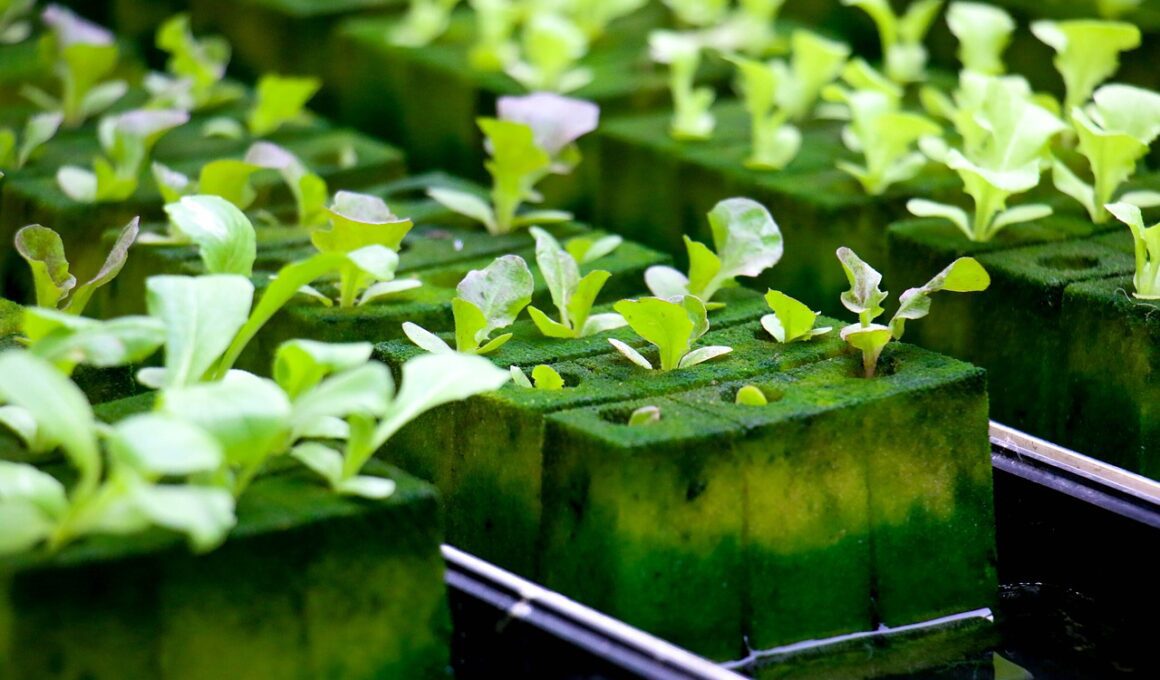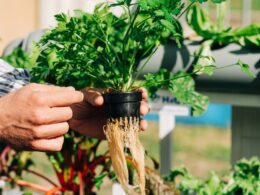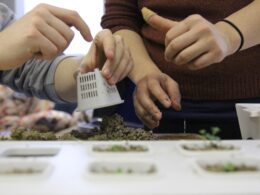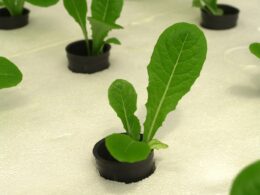Do you love consuming fresh and healthy lettuce in your meals? You might have heard about hydroponic lettuce, which is grown in water without soil, and is becoming increasingly popular in the market due to its high nutritional value and freshness.
However, you may also have concerns about the safety of hydroponic lettuce, particularly when it comes to E. coli contamination. E. coli is a type of bacteria that can cause food poisoning, leading to symptoms such as diarrhea, stomach cramps, and vomiting. It primarily spreads through contaminated food or water, and can also be transmitted from person to person.
With the rise of hydroponic lettuce production, there have been concerns about the potential risks of E. coli contamination in this type of lettuce. In this article, we will explore the risks of contamination in hydroponic lettuce, prevention methods, and instances of E. coli contamination in hydroponic lettuce.
What is E. coli and how does it spread?
You may not realize it, but E. coli is a dangerous bacteria that can easily spread and cause serious illness. It’s important to understand how it spreads so you can protect yourself and your loved ones.
E. coli symptoms can range from mild stomach cramps to severe diarrhea, which can be bloody. Some people may also experience vomiting, fever, and body aches. These symptoms usually appear within 2 to 5 days after exposure to the bacteria.
E. coli can be transmitted through a variety of routes. The most common route is through contaminated food or water. This is why it’s important to thoroughly wash your hands before handling food and to cook meat to the appropriate temperature.
E. coli can also be spread through contact with animals, especially cows and their manure. Swimming in contaminated water or coming into contact with infected individuals can also lead to transmission.
If you suspect that you have contracted E. coli, it’s important to seek medical attention right away. Treatment options for E. coli infection include rest, hydration, and over-the-counter medication to relieve symptoms. In severe cases, hospitalization may be necessary to prevent complications.
Remember, the best way to protect yourself and your loved ones from E. coli is through prevention. Be mindful of how it spreads and take necessary precautions to avoid infection.
The Risks of Contamination in Hydroponic Lettuce
Contamination is a serious concern when it comes to growing and consuming lettuce in non-traditional ways. Hydroponic farming, which involves growing plants in water rather than soil, is becoming more popular as a sustainable and efficient way of producing food. However, this method of farming also poses potential risks for food safety.
Here are four ways that hydroponic lettuce can become contaminated:
-
Waterborne pathogens: If the water used in hydroponic systems is contaminated with harmful bacteria, such as E. coli, it can easily spread to the lettuce.
-
Poor sanitation: If the equipment used in hydroponic farming is not properly cleaned and sanitized, it can become a breeding ground for bacteria.
-
Human error: If workers handling the lettuce or the hydroponic system are not following proper hygiene practices, they can introduce harmful bacteria to the lettuce.
-
Cross-contamination: If hydroponic lettuce comes into contact with other contaminated foods during processing or transportation, it can become contaminated as well.
To minimize the risks of contamination in hydroponic lettuce, it’s important to follow strict food safety practices. This includes regularly testing the water for pathogens, using proper sanitation procedures, and training workers on proper hygiene practices. By taking these steps, hydroponic farming can continue to be a safe and sustainable method of producing lettuce and other crops.
Is It Safe to Eat Hydroponic Lettuce After It Regrows?
Hydroponic lettuce regrowth is generally safe to consume, provided proper growing practices are followed. However, it’s essential to consider potential contamination risks during the regrowth process, such as water quality and sanitation. Ensuring proper hygiene and using clean water sources will minimize any potential health concerns, making hydroponic lettuce regrowth a viable and safe option for consumption.
Prevention Methods
Let’s talk about how we can make sure our fresh produce is safe to eat by implementing effective prevention methods. When it comes to hydroponic lettuce, the risk of contamination can be reduced by implementing proper sanitation practices. This includes regularly cleaning and disinfecting the hydroponic system, as well as washing your hands before and after handling the plants.
To further ensure safety, it’s important to know the source of your hydroponic lettuce. Choose a reputable supplier that follows strict food safety protocols. Additionally, consider growing your own hydroponic lettuce at home, where you have complete control over the growing environment and sanitation practices.
To help you understand the importance of sanitation practices in hydroponic lettuce, here’s a table highlighting some common contaminants and how they can affect your health:
| Contaminant | Health Effects |
|---|---|
| E. coli | Causes severe diarrhea and abdominal pain |
| Salmonella | Causes fever, diarrhea, and abdominal cramps |
| Listeria | Can lead to serious infections such as meningitis and sepsis |
By implementing proper sanitation practices and being mindful of the source of your hydroponic lettuce, you can greatly reduce the risk of contamination and ensure that your fresh produce is safe to eat. Remember to wash your hands, clean and disinfect the hydroponic system regularly, and choose a reputable supplier or grow your own at home.
Instances of E. coli Contamination in Hydroponic Lettuce
If you’re a fan of fresh produce, it’s important to be aware of recent incidents involving dangerous bacteria in the food supply chain. Hydroponic farming techniques have been gaining popularity as a way to grow lettuce and other leafy greens without soil. However, these methods aren’t immune to E. coli outbreaks in produce.
In 2018, there was a significant outbreak of E. coli linked to romaine lettuce grown in hydroponic systems. The outbreak affected dozens of people across multiple states and even resulted in one death. Investigations revealed that the contamination likely occurred due to tainted irrigation water used in the hydroponic systems.
While hydroponic farming is generally considered safe, the incident serves as a reminder that no food production method is completely foolproof. It’s important to follow proper food safety protocols when handling and preparing produce, regardless of how it was grown. This includes washing your hands before and after handling produce, thoroughly washing all fruits and vegetables, and avoiding cross-contamination with raw meats.
Conclusion: Is it safe to consume hydroponic lettuce?
Don’t let the fear of contamination stop you from enjoying fresh and healthy produce, as long as you take the necessary precautions to ensure its safety. Hydroponic lettuce has been the center of attention when it comes to food safety, especially after certain outbreaks of E. coli contamination. However, it’s important to note that hydroponic farming has its advantages when it comes to food safety. Here are four things you need to know about hydroponic lettuce and its safety:
-
Hydroponic farming is a controlled environment where plants are grown without soil, which means there’s less chance of contamination from soil-borne pathogens.
-
Hydroponic lettuce is grown in a nutrient-rich solution, which means it has a higher nutritional value compared to conventionally grown lettuce.
-
Hydroponic farms are closely monitored for any signs of contamination, and any contaminated produce is removed immediately.
-
When purchasing hydroponic lettuce, make sure to choose a reputable brand and always wash the produce thoroughly before consuming.
In conclusion, hydroponic lettuce is safe to consume as long as proper food safety measures are taken. Don’t let the fear of contamination stop you from enjoying its nutritional benefits. Always make sure to purchase from a reputable brand, wash the produce thoroughly, and enjoy the fresh and healthy taste of hydroponic lettuce.
Frequently Asked Questions
What are the symptoms of E. coli infection?
If you’re experiencing symptoms such as abdominal pain, diarrhea, and fever, you may have an E. coli infection. Prevention strategies include washing your hands thoroughly, cooking meat to the appropriate temperature, and avoiding raw milk and unpasteurized juices.
If you do get infected, treatment options include staying hydrated, resting, and taking medication to relieve symptoms. In severe cases, hospitalization may be necessary.
It’s important to take steps to prevent E. coli infections, as they can be dangerous and even deadly in some cases.
Can E. coli be transferred from person to person?
If someone has E. coli, they can transmit the bacteria to others through various transmission routes. This can occur through direct contact with fecal matter, contaminated food or water, or by touching surfaces that have been contaminated.
To prevent transmission, it’s important to practice good hygiene such as washing your hands frequently and thoroughly, especially after using the bathroom or changing diapers. It’s also important to properly cook and handle food, and to avoid consuming raw or undercooked meats.
Additionally, avoiding close contact with someone who has been diagnosed with E. coli is recommended. By following these prevention methods, you can reduce your risk of contracting and transmitting E. coli.
How long does it take for E. coli symptoms to appear after consuming contaminated food?
If you’ve recently consumed contaminated food, it’s important to be aware of the E. coli incubation period and the duration of symptoms.
Symptoms typically appear within 2-5 days of exposure, but can take up to 10 days in some cases. These symptoms include stomach cramps, diarrhea, and vomiting.
While most people recover within a week, severe cases can lead to kidney failure or even death.
To avoid contamination, it’s important to practice good hygiene when handling food and to follow proper food safety measures.
This includes thoroughly washing all produce, including hydroponic lettuce, and storing it at the appropriate temperature.
By taking these precautions, you can reduce the risk of E. coli and other foodborne illnesses.
Are there any other types of produce that are commonly contaminated with E. coli?
Common sources of E. coli contamination in produce include leafy greens such as lettuce, spinach, and kale, as well as raw sprouts and herbs.
Prevention strategies include washing all produce thoroughly before consuming, avoiding cross-contamination with raw meats, and storing produce at the proper temperature.
It’s also important to purchase produce from reputable sources and to check for any recalls or outbreaks before consuming.
By taking these steps, you can greatly reduce your risk of contracting E. coli from contaminated produce.
What steps should be taken if someone suspects they have contracted E. coli from hydroponic lettuce?
If you suspect that you’ve contracted E. coli from hydroponic lettuce, the first step is to seek medical attention immediately. Your doctor will test for E. coli and other harmful bacteria and provide treatment accordingly.
It’s also crucial to report the contamination to the appropriate authorities. This will help prevent others from getting sick and may also have legal implications for the growers and distributors of the contaminated lettuce.
It’s important to note that steps are taken to prevent E. coli contamination in hydroponic lettuce, but it can still happen. Always follow safe food handling practices and thoroughly wash produce before consuming.
Conclusion
So, can you get E. coli from hydroponic lettuce? The answer is yes, but it’s not a reason to panic.
E. coli is a bacteria that can cause some serious health problems, but the risk of contamination in hydroponic lettuce is relatively low. This doesn’t mean you shouldn’t be cautious.
When it comes to food safety, it’s always better to be safe than sorry. Make sure to thoroughly wash your lettuce before consuming it, and be aware of any recalls or outbreaks in your area.
As long as you take the appropriate precautions, hydroponic lettuce can be a safe and healthy addition to your diet.









